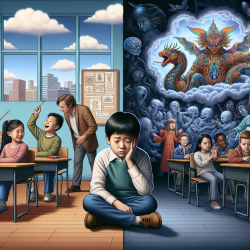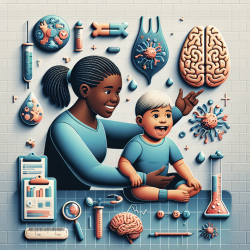Introduction
In the realm of childhood development and mental health, the impact of social interactions on psychological outcomes is a critical area of study. A recent research article titled Peer-reported bullying, rejection and hallucinatory experiences in childhood by Steenkamp et al. delves into the complex relationship between bullying, peer rejection, and the emergence of hallucinatory experiences in children. This blog post aims to provide insights for practitioners on how to leverage these findings to enhance their practice and encourage further research.
Understanding the Research
The study conducted by Steenkamp et al. is embedded in the Generation R Study, a population-based cohort study. It explores the association between bullying perpetration, peer rejection, and hallucinatory experiences in children aged 7 to 10 years. The researchers used a novel peer nomination method to assess social dynamics and their potential impact on mental health outcomes.
Key findings from the study include:
- Children who engaged in bullying were found to have a 50% higher likelihood of experiencing hallucinatory experiences later in childhood.
- Those identified as both bullies and victims (bully-victims) exhibited an 89% higher risk of hallucinatory experiences.
- Unfavorable positions within peer rejection networks were linked to an increased risk of hallucinatory experiences.
Implications for Practitioners
For practitioners working with children, these findings underscore the importance of addressing bullying and peer rejection as part of a comprehensive mental health strategy. Here are some actionable steps practitioners can take:
- Early Identification: Implement screening tools to identify children involved in bullying, whether as perpetrators, victims, or both. Early identification can lead to timely interventions.
- Intervention Programs: Develop and implement intervention programs that focus on improving social skills, empathy, and conflict resolution among children. Programs should also address the needs of bully-victims, who are particularly vulnerable.
- Parental Involvement: Engage parents in discussions about bullying and its potential psychological impacts. Provide resources and support to help parents address these issues at home.
- Peer Support Networks: Encourage the formation of peer support networks within schools to promote inclusivity and reduce instances of peer rejection.
Encouraging Further Research
While the study by Steenkamp et al. provides valuable insights, it also highlights the need for further research in this area. Practitioners are encouraged to contribute to this growing body of knowledge by:
- Conducting Longitudinal Studies: Long-term studies can provide a deeper understanding of the lasting effects of bullying and peer rejection on mental health.
- Exploring Protective Factors: Research into protective factors that can mitigate the impact of bullying and peer rejection could lead to more effective interventions.
- Collaborating with Researchers: Practitioners can collaborate with researchers to design studies that address practical challenges faced in educational settings.
Conclusion
The relationship between bullying, peer rejection, and hallucinatory experiences in childhood is complex and multifaceted. By understanding and applying the findings of this research, practitioners can play a crucial role in improving the mental health outcomes of children. To read the original research paper, please follow this link: Peer-reported bullying, rejection and hallucinatory experiences in childhood.










